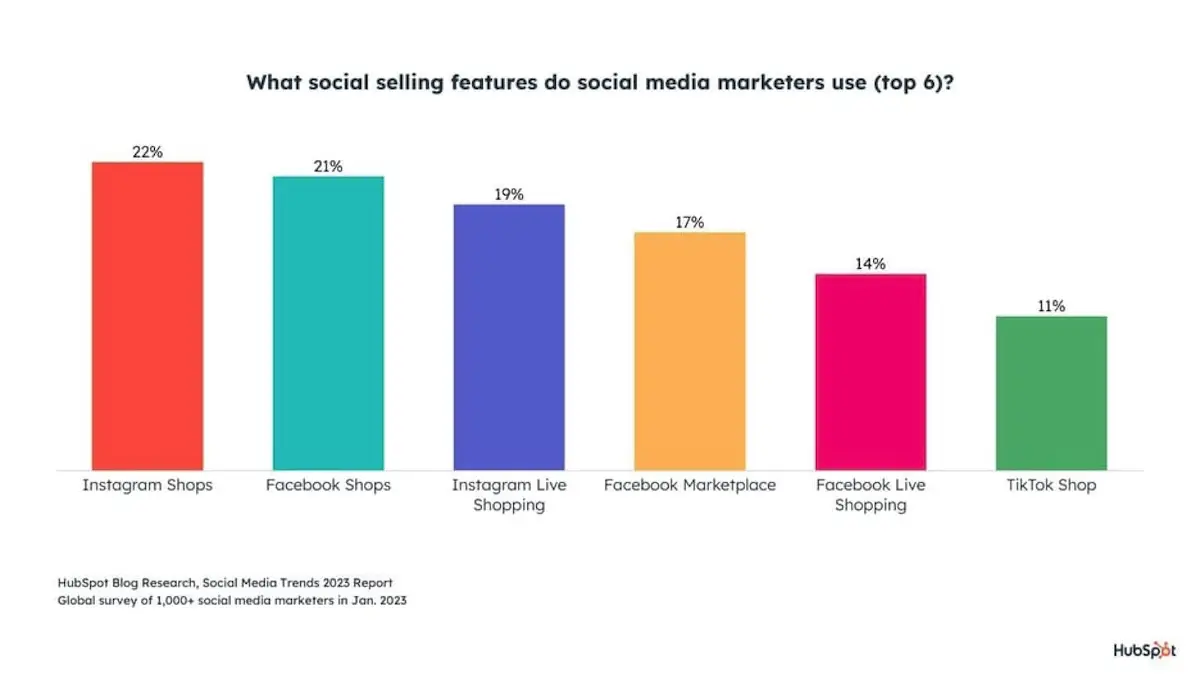Social Media Marketing Trends for the Year Ahead

Describing how many people spend a significant portion of their day on social media would not be an exaggeration, especially in today’s world.
Social media has become an integral part of people’s daily lives and routines. Some individuals are so deeply engaged with it that the first thing they do upon waking is check their social media feeds.
Recognizing the pivotal role of social media in consumers’ lives, marketers and businesses are increasingly gravitating towards social platforms to connect with their target customers. However, the sheer volume of content on social media, coupled with intense competition, can make it challenging to stand out without a well-defined social media marketing strategy. Staying informed about the latest social media trends can provide the fuel needed to enhance your strategy and distinguish yourself in the crowded digital landscape. In the meantime, here are crucial social media trends to keep in mind for 2024.
1. Crisis Management for Brands and Businesses
A Twitter-commissioned survey reveals that 61% of respondents believe brands should acknowledge and address crises in real-time through their advertising and communication efforts. Moreover, social media can serve as an effective crisis management tool, helping businesses rebuild trust with their audience. Approximately 81% of respondents feel that social media contributes to improving a company’s accountability. The same report also notes that 89% of people believe that businesses can regain their trust through transparency, which involves acknowledging mistakes and outlining steps to address the issue.
Given how social media is utilised today, both by users and businesses, it has the potential to be a powerful tool for managing and resolving crises.
2. Brand Authenticity Still Wins
One way for brands to foster authenticity is by encouraging their leaders to take a more active role on social media. Transparency not only builds long-term trust but also helps consumers maintain their loyalty to a brand, even in times of crisis. For instance, in the same survey, millennial consumers expressed a desire for brands to be more transparent on social media, with 69% wanting a company’s CEO to have a “personal presence” on social media channels. Furthermore, 71% of millennial consumers believe that CEOs can have a positive impact when they are transparent.
When brands focus on building more authentic relationships and deeper connections with their audience, they can reap a range of benefits, including an improved brand reputation and enhanced sales figures.
3. Social Media as Online Shopping Outlets
A HubSpot survey revealed that 22% of social media users made direct purchases through Instagram, with 21% using Facebook for social media shopping.

However, the path to success in social commerce may not be entirely smooth. While it presents significant growth opportunities, it may not be a suitable solution for all brands. Before venturing into social commerce, conducting extensive research on your target market and chosen platform is essential to determine their capacity to support social commerce initiatives and scale with your brand’s growth.
4. Short-Form Bite-Sized Content Still Dominates Social Media
Bite-sized content, such as short-form videos, allows brands to maintain audience engagement, even in a world where attention spans are shrinking. The average human attention span is now around 8.25 seconds. For instance, Twitter introduced Fleets, a feature similar to Snapchat Stories, where posts or videos disappear after 24 hours.
However, the emphasis on bite-sized content doesn’t imply compromising on quality. Despite shorter attention spans, high-quality content can still break through the noise and captivate your audience. If you’re interested in creating your own short-form video content, you can refer to our quick guide, complete with best practices to help you produce compelling bite-sized content that your audience will appreciate.
5. AI Will Influence Post Recommendations (Facebook and Instagram)
6. Interactive Ads Will Be Favored
Such advertising enables users to actively engage with the ad content instead of resorting to ad blockers or ad-skipping. Allowing users to actively participate in these “experiences” increases the likelihood of them engaging with a specific brand or product. Beyond capturing more viewer attention compared to traditional ads, the use of interactive ads can significantly boost brand awareness.
7. Nano and Micro Influencers Will Be In the Mainstream
In line with the trend toward more authentic experiences, today’s consumers are open to connecting with brands and influencers who provide not only value but also authenticity. Therefore, in the coming years, brands are expected to increasingly partner with nano- and micro-influencers. Despite having smaller followings, nano- and micro-influencers often boast higher engagement rates. For instance, nano-influencers typically have an average engagement rate of 3.69%, surpassing that of macro-influencers.
As brands pivot towards a more “community-led approach,” nano- and micro-influencers are likely to take center stage in the world of influencer marketing. This shift reflects the growing demand for authentic and relatable content creators, even if they have smaller audiences.
8. Human-Centric Approach Will Be Prominent
As brands become more interactive, we might witness a shift toward a more “relaxed” approach to audience engagement. For instance, brands may adopt more conversational tones and strive to make their image more relatable and accessible to their target audience, departing from the meticulously curated image that audiences are accustomed to seeing. This approach reflects a growing emphasis on authenticity and human connections in marketing.
9. Gaming as an Alternative to Social Media Platforms
While the gaming industry is not expected to replace social media platforms due to its immense size, it does offer ample opportunities for brands to stimulate social interaction and community engagement. Although no definitive path has been established yet, we may witness brands increasingly tapping into the potential of the gaming industry to foster social interactions and engagement.





